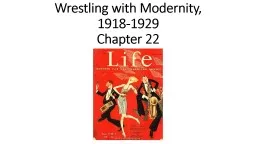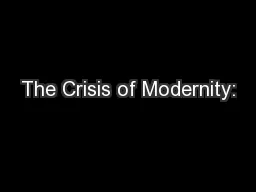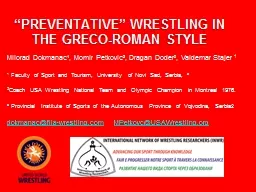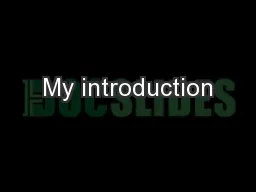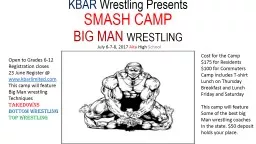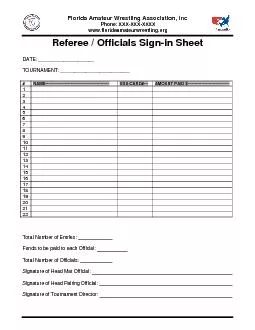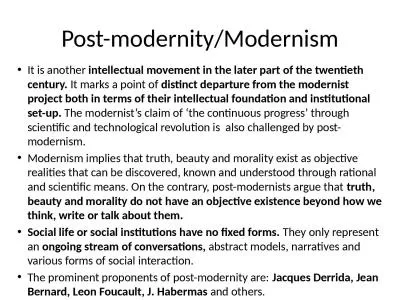PPT-Wrestling with Modernity,
Author : karlyn-bohler | Published Date : 2018-11-09
19181929 Chapter 22 Conflicted Legacies of World War One Racial Strife Participation in WW1 led to African Americans standing up for their rights and resisting oppression
Presentation Embed Code
Download Presentation
Download Presentation The PPT/PDF document "Wrestling with Modernity," is the property of its rightful owner. Permission is granted to download and print the materials on this website for personal, non-commercial use only, and to display it on your personal computer provided you do not modify the materials and that you retain all copyright notices contained in the materials. By downloading content from our website, you accept the terms of this agreement.
Wrestling with Modernity,: Transcript
Download Rules Of Document
"Wrestling with Modernity,"The content belongs to its owner. You may download and print it for personal use, without modification, and keep all copyright notices. By downloading, you agree to these terms.
Related Documents

